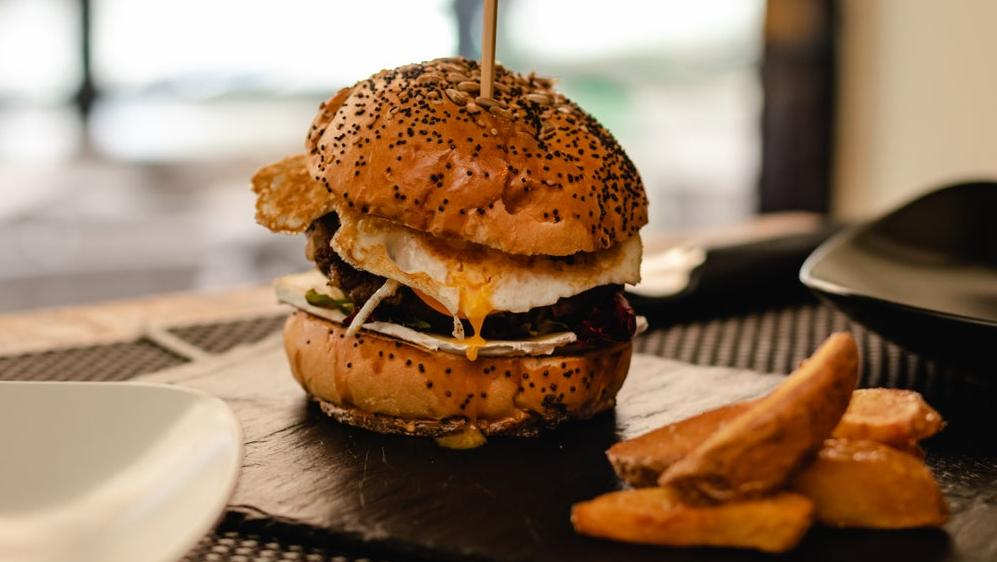The $10 Burger And $25 Burger Aren't So Different
The humble hamburger has an impressive range. But what do expensive burgers have that cheap ones lack?
Ever notice that many middle-fancy restaurants have adopted the humble burger as their go-to option for the "I'll go last" person? The diner who picks the entire menu apart thrice, only to sigh and dejectedly announce, "I'll just have the burger"?
I know, because I've been that person.
I scour the menu for the perfect meal, only to be blindsided by mouthwatering nostalgia. As a child, I looked forward to the occasional Happy Meal, a treat for my developing taste buds. In my teens, I learned there are other spots like Five Guys or Shake Shack that cost a smidgeon more for a leap in quality. Then, once I arrived at drinking age, I uncovered the covert taverns in my city that only the locals know cook the best burger. In each instance, I was paying a little more money for a proportionally better burger.
But now, in my late 20s, I panic-order the $25 burger under the waiter's pressuring gaze, hoping it lives up to price point—one substantially higher than I'm used to paying for a burger. Indeed, what's placed in front of me isn't like the burgers I grew up with. It's grass-fed organic beef on a brioche bun with locally sourced lettuce, tomato, and onion piled high, slathered with house-made ketchup and truffle mayo, topped with gruyere cheese. Plated alongside it are too few fries and a tiny silver cup of aioli—and in some cases, there's a steak knife inexplicably wedged down the center of the burger.
If it sounds like I'm complaining about this hypothetical meal, think again. In fact, it's probably delicious. For instance, I've eaten the $31 Emmy burger from New York City's Emily—which is in the conversation for best in the city—and it was immensely satisfying. Still, there's no denying that it feels pretty far off from the hamburger's humble beginnings.
A brief history of the hamburger
Before there was even a bun, restaurants were serving "hamburger steak" across America by the late 19th century. The dish was exactly what it sounds like: a minced beef patty served on a plate. The inexpensive meal began to resemble its current form by the early 1900s, booming in popularity thanks to fast food forebears like White Castle and Kewpee.
By the middle of the 20th century, the word "hamburger" was synonymous with a fast, cheap, and tasty dinner, championed by working-class people who didn't necessarily have the time or money to dine out more lavishly. In 1948, pre–Ray Kroc takeover and national expansion, McDonald's hamburgers sold for just 15 cents. Nowadays, that hamburger runs you $1.79—a miraculously low price by today's standards.
Cheap burgers vs. gourmet burgers: What’s the difference?
I'm not going to pretend that McDonald's classic hamburger is comparable to something like the Big Mec at Los Angeles' Petit Trois. But let's compare apples to apples by measuring that fancy burger against its direct McDonald's inspiration, the Big Mac. Both burgers share a similar foundation of two beef patties and special sauce. But while the Big Mec costs $32, the Big Mac only runs about $5.51 at my local Arches.
Of course, the Big Mac's ingredients are not as high-quality as the Big Mec. In 2016, a Reddit user shared a photo showing that it costs McDonald's only $1.77 to make each Big Mac. On the other hand, a study by the Association for Consumer Research discovered that higher prices "unconsciously influence consumers' actual product experiences" through the placebo effect. So even with its quality meat and cheese, it's just as possible that the $25 burger wouldn't win in a blind taste test against the cheaper patties being flipped at your local diner, drive-in, or dive (sorry).
Even so, I think there actually is a time and a place for a $25 burger. Why? Because nearly all burgers fulfill their original purpose, no matter the price. Even a $25 burger is the cost-efficient choice for the hungry budgeter who finds themself at a nice steakhouse, where most items cross the $40 threshold. It's the quick lunch option for the on-the-go worker armed with a DoorDash gift card and a hankering for something fancy. And most of all, it's a safe haven for the indecisive diner like me, or the reluctant culinary adventurer, both of whom just want to pick something sentimental from the menu instead of opting for the unknown. Sometimes that reassurance is worth the cost.
